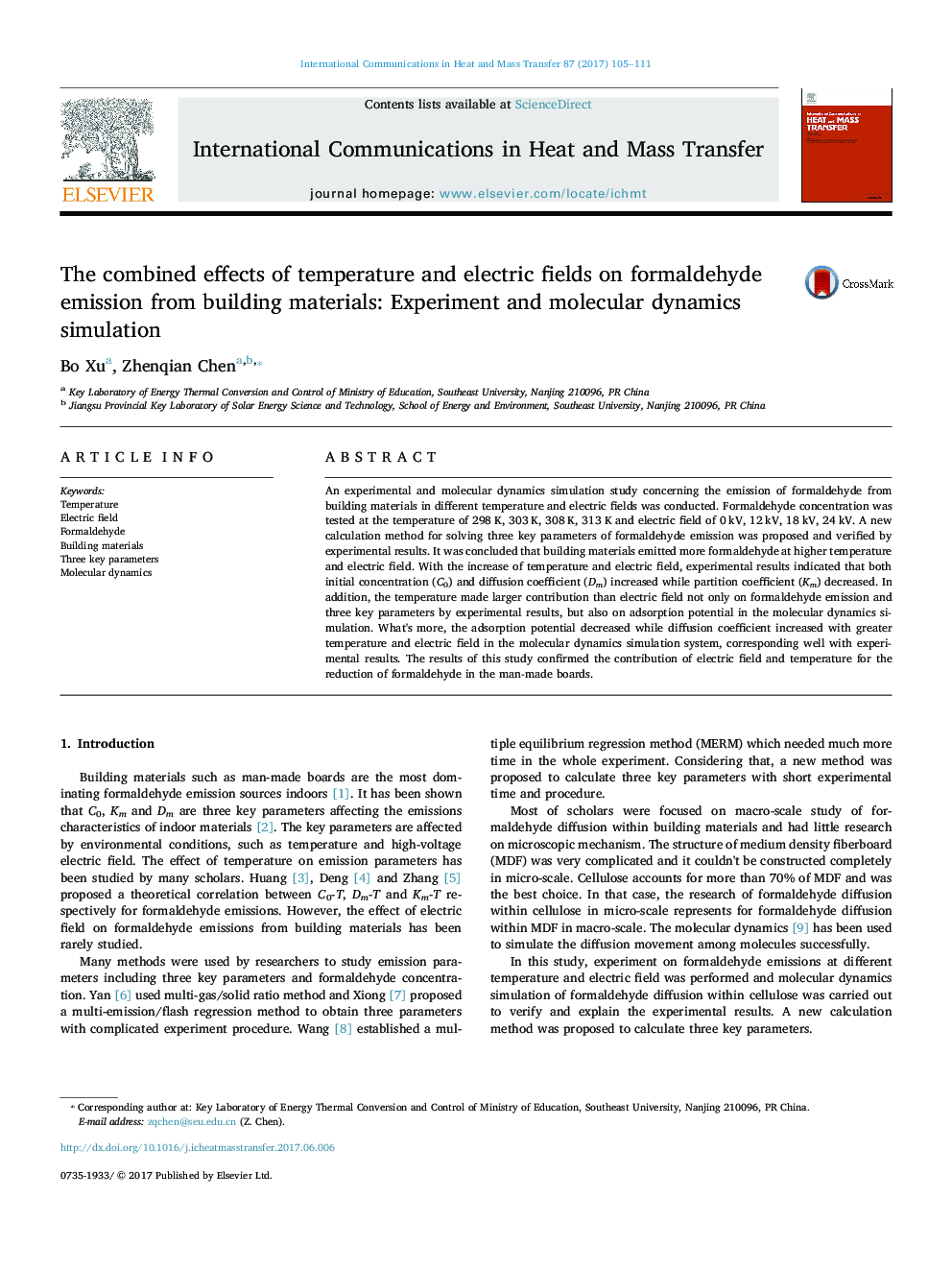| Article ID | Journal | Published Year | Pages | File Type |
|---|---|---|---|---|
| 4992816 | International Communications in Heat and Mass Transfer | 2017 | 7 Pages |
Abstract
An experimental and molecular dynamics simulation study concerning the emission of formaldehyde from building materials in different temperature and electric fields was conducted. Formaldehyde concentration was tested at the temperature of 298Â K, 303Â K, 308Â K, 313Â K and electric field of 0Â kV, 12Â kV, 18Â kV, 24Â kV. A new calculation method for solving three key parameters of formaldehyde emission was proposed and verified by experimental results. It was concluded that building materials emitted more formaldehyde at higher temperature and electric field. With the increase of temperature and electric field, experimental results indicated that both initial concentration (C0) and diffusion coefficient (Dm) increased while partition coefficient (Km) decreased. In addition, the temperature made larger contribution than electric field not only on formaldehyde emission and three key parameters by experimental results, but also on adsorption potential in the molecular dynamics simulation. What's more, the adsorption potential decreased while diffusion coefficient increased with greater temperature and electric field in the molecular dynamics simulation system, corresponding well with experimental results. The results of this study confirmed the contribution of electric field and temperature for the reduction of formaldehyde in the man-made boards.
Related Topics
Physical Sciences and Engineering
Chemical Engineering
Fluid Flow and Transfer Processes
Authors
Bo Xu, Zhenqian Chen,
